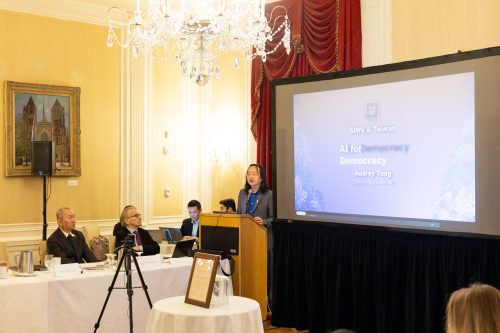By Michael Dukakis, Nguyen Anh Tuan, Nazli Choucri, Thomas Patterson, David Silbersweig, John Savage
For the 13th International Symposium “Intelligent Systems – 2018”,
St. Petersburg, Russia, October 22–24, 2018
The Artificial Intelligence World Society (AIWS) is a set of values, ideas, concepts and protocols for standards and norms whose goal is to advance the peaceful development of AI to improve the quality of life for all humanity. It was conceived by the Michael Dukakis Institute for Leadership and Innovation (MDI) and established on November 22, 2017.
AIWS has developed the AIWS 7-Layer Model. This model establishes a set of norms and best practices for the development, management, and uses of AI so that this technology is safe, humane, and beneficial to society. AIWS recognizes that we live in a chaotic world with differing, and sometimes conflicting, goals, values and norms. Hence, the 7-Layer Model is aspirational and even idealistic. Nonetheless, it provides a baseline for guiding AI development to ensure positive outcomes and to reduce pervasive and realistic risks and related harms that AI could pose to humanity. The Model is based on the assumption that humans are ultimately accountable for the development and use of AI, and must therefore preserve that accountability. Hence, it stresses transparency of AI reasoning, applications, and decision making, which will lead to auditability and validation of the uses of AI systems.
- Layer 1: Charter and Principles: To create a society of AI for a better world and to ensure peace, security, and prosperity
- Layer 2: Ethical Frameworks: Guidelines for the Role of AI in Building the Next Generation Democracy
- Layer 3: Standards: Standards for the Management of AI Resources and Development
- Layer 4: Laws and Legislation: Laws for the Role of AI in Building the Next Generation Democracy
- Layer 5: International Policies, Conventions, and Norms: Global Consensus
- Layer 6: Public Services and Policymaking: Engage and Assist Political Leaders
- Layer 7: Business Applications for All of Society: Engage and Assist Businesses
AI-Government is a component of the AIWS. Two of the layers of the 7-Layer Model pertain to AI-Government. E-Government is the use of communication and information technology for improving the performance of public sector agencies. AI-Government transcends E-Government by applying AI to assist decision making for all critical public sector functions – notably provision of public services, performance of civic functions, and evaluation of public officials. At the core of AIGovernment is the National Decision making and Data Center (NDMD). NDMD collects, stores, analyzes, and applies massive amounts of data relevant to the provision of public services and the evaluation of public programs and officials. It does not replace governance by humans or human decisional processes but guides and informs them, while providing an objective basis for service provision and evaluation.










